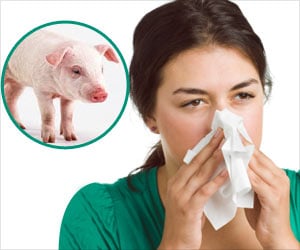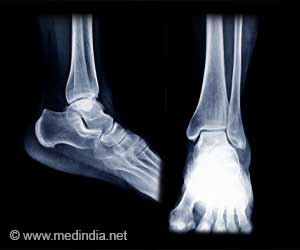Thai scientists who infected newborn pigs with the swine flu virus have found they developed symptoms similar to those found in humans, a researcher said on Tuesday.
Thai scientists who infected newborn pigs with the swine flu virus have found they developed symptoms similar to those found in humans, a researcher said on Tuesday.
Researchers at Bangkok's Chulalongkorn University found the piglets showed symptoms of coughing, sneezing, nasal discharge and conjunctivitis within four days of being infected with the A(H1N1) virus.But none of the 22-day-old animals died, said Roongroje Thanawongnuwech, who led the research.
"The A(H1N1) didn't kill any pigs, they had the clinical side of fever and some... flu symptoms," Roongroje told AFP, adding that the pigs also developed large lung legions.
"It also shows that the virus is contained only in the respiratory tract, we don't see it anywhere else in the blood or tissue," Roongroje said.
Roongroje said the research was also useful in learning more about the development of the new form of the virus.
The A(H1N1) virus is believed to be a mix of bird and human flu which came together in pigs, forming a sub-strain of H1N1 with a new pattern of genes.
Advertisement
Last month the WHO officially renamed it "influenza A (H1N1)" instead of swine flu after complaints that the name was causing an unjustified clampdown on the pork trade.
Advertisement
The discovery earlier this month of the infection of a pig herd by a human in Canada has added further weight to evidence that the virus could move between humans and animals in either direction.
The WHO, the UN food agency and the World Organisation for Animal Health set up an early warning system for animal disease threats in 2006.
Source-AFP
SRM









